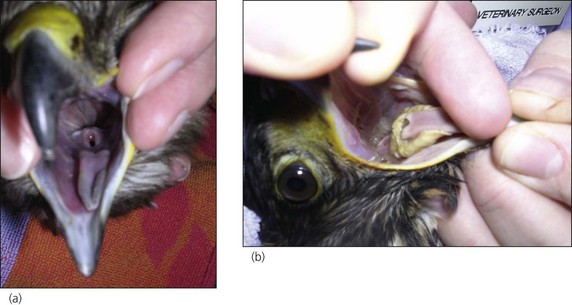14 Stomatitis in a Harris’ hawk
Husbandry
The bird was flown on 5 days each week. She was weighed daily. The diet consisted mainly of day-old chicks, with occasional quail and rabbit. The quantity fed once daily varied depending on the morning weight, keeping the bird slightly lighter during the flying season and allowing her to put on body condition in preparation for moulting. Adult female Harris’ hawks usually weigh 825–1200 g (see Harris’ hawk ecology in Ch. 11).
Clinical Examination
DIFFERENTIAL DIAGNOSES
The differentials for white/cream caseous oropharyngeal lesions in a raptor were:
Case Work-Up
Examination under general anaesthesia
This allowed a comprehensive assessment of the oral cavity (Fig. 14.1a) including the base of the tongue, as well as permitting sample collection for further tests. Anaesthesia was induced via a close-fitting facemask. The hawk was not intubated for two reasons: the procedure was rapid, and there was a risk of introducing infection into the lower respiratory tract if an endotracheal tube was passed via the oral cavity. The lesions extended over the tongue, making it slightly rigid, and laterally in the oropharynx (Fig. 14.1b). Lesions did not extend into the oesophagus.




